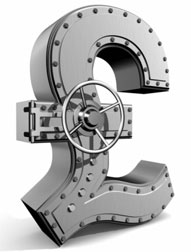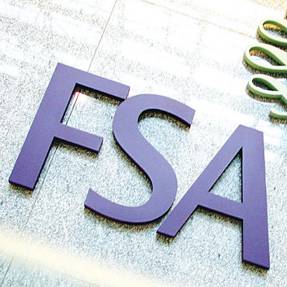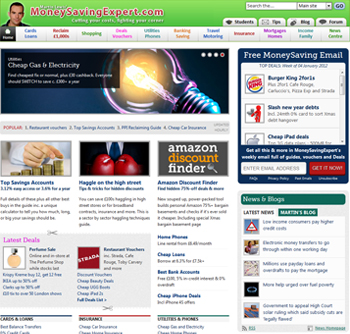 If inflation outstrips your savings interest rate, your money is SHRINKING. The cure are ‘inflation-linked savings’ that guarantee to track or beat inflation, some are even tax free, and this is a guide to the very best of those.
If inflation outstrips your savings interest rate, your money is SHRINKING. The cure are ‘inflation-linked savings’ that guarantee to track or beat inflation, some are even tax free, and this is a guide to the very best of those.
We’ll run through how inflation-linked savings work, what tricks to watch for, who the top payers are and the big risks. Yet if you want swift access to your cash see the Top Savings and Top Cash ISAs guide.
In this guide
Best Buys
How do inflation-linked savings work?
Currently most savings accounts don't come close to the rate of inflation. So you're actually losing money, as prices are increasing faster than your savings grow.
Inflation linked savings work similarly to fixed rate accounts, in the sense your money is locked away, but they pay you the percentage change in inflation. Usually there is also a fixed amount on top of this rate, meaning that even if inflation was negative (deflation) you'd still get some increase on your balance over the term.
Unsure what inflation is? Read our mini guideWhat is inflation?
 In simple terms inflation is the measure of the rate at which prices increase. It's based on the cost of a basket of goods and services, and is calculated and published each month.
In simple terms inflation is the measure of the rate at which prices increase. It's based on the cost of a basket of goods and services, and is calculated and published each month.
A number index is used, then translated into a percentage. So if one month the figure is 100 and the next it's 105 the rate of inflation for that month would be 5%. Published figures are for the previous month, so the percentage announced in October will be September's inflation rate.
There are two types of inflation index - Consumer Prices Index (CPI) and Retail Prices Index (RPI). Both use the same basket of goods and services, but RPI also includes housing costs and mortgage interest payments, so is usually higher. Handily, most inflation-linked savings bonds use the RPI figure.
You can find historical information on inflation rates on the Office for National Statistics website.
Ensure your savings aren't losings...
A savings account that pays less than the rate of inflation is eroding your wealth...
Imagine inflation is 5%
A shopping trolley of goods costing £1,000 this year will then cost £1,050 next yearAnd the top saving account pays 3%
You put £1,000 in it, and in a year after basic tax you’ve £1,024Therefore you’ve no longer enough to buy the goods
Effectively your money has shrunk, so it's LOSINGS not savings account.
What to watch out for...
Does it always beat inflation?
Unfortunately not always. Some accounts take tax off the interest you're paid, which eats away at your gain, meaning it won't always beat inflation. Though accounts from the government-backed NS&I; and any ISA inflation-linked accounts are tax free, making them an even better deal for higher and top rate taxpayers when they're available.
What about deflation?
It's not unheard of for inflation to go negative – known as deflation (there was a large patch in 2009). Luckily most account terms mean if that happens they count the inflation rate as zero rather than negative. So if you’re due to be paid RPI + 0.5%, then you get the fixed 0.5% interest for that time.
How is the increase in inflation calculated?
This varies from product to product, but is is usually one of two ways:
-
The interest rate is calculated using the percentage change in the inflation index between the account start date and then when it ends, so it would only be calculated using the two inflation index figures.
- The interest rate is calculated using the yearly percentage change in the inflation index. So for a five year account there would be five calculations made over the term.
Is the fixed interest always guaranteed?
It usually is, though be sure to check the terms and conditions. So even if inflation is negative (deflation), you should still get the interest.
However be very careful, these accounts can be quite sneaky and while they might say you get 1.5% interest, sometimes it's a one off payment over the whole term, not a yearly amount. On other accounts the amount is tiered, so the average interest matches the advertised figure, but it's tiered so that if you withdraw early you get less interest.
This type of account is fairly complex, so if you don't think it's for you take a took at the Starting Saving guide for other options. Or if you just want a standard easy access or fixed rate account see the Top Savings guide.
Important! Don't miss any inflation savings news Get MoneySavingExpert's free, spam-free weekly email full of guides & loopholes
What are the risks?
Just because the accounts will beat or match inflation it doesn't mean that they'll pay the most - they could end up being the best or a relatively poor account, depending on the economy. The main risks are:
- Poor return due to low inflation. Prices could rise much more slowly, or even begin to drop, in which case your return will too. If, in extreme circumstances, prices are lower in five years than now, all the accounts listed guarantee you won't actually lose money, but the interest rate is likely to have been very uncompetitive.
- Other savings rates shoot up. The UK's base rate is currently at an all-time low. Though if it jumps up in the short term, as some pundits predict, the top standard savings rates will too. Though it would take quite a rise for them to overtake inflation-linked bonds, it's far from impossible as the economy recovers

- Can I lose money? Even if there's deflation, all the accounts below guarantee you'll get your initial deposit back at the end of the term (usually plus the fixed rate of interest). Though do read the savings safety section below for full details of how your cash is protected.
- You must lock-away cash. With most inflation-linked savings you can't access your money, so you should be sure you won't need it for the full length of the term. If you think you might want your money sooner see below for some other alternatives.
Top inflation-linked savings
There are currently only two inflation-linked savings account, and there have been others better than it recently. Ensure you read the details carefully as they are complex. If you want simpler options, read the Top Savings guide for the best easy access and fixed rate accounts.
Five year fixed inflation-linked savings
Santander - no access for five & half yearsRPI inflation + 5% or 3.06% AER interest. Min £500

- Current Rate: RPI inflation rate + 5%, or 3.06% AER
- Min. Deposit: £500
- Max. Deposit: £2,000,000
- Access: Branch only
- Paid out: 2 Septembert 2017
- Safety: Shared £85,000 UK protection with A&L;, Asda, Bradford & Bingley and Cahoot (see Safe Savings)
The Santander Inflation Linked Savings Bond (issue 8) pays the greater of either the percentage change in RPI plus 5%, or 3.06% AER interest, if you lock cash away until 2 September 2017. However you don't get paid the interest until the end of the term, and can't access your money earlier. You can deposit between £500 and £2 million.
Interest is calculated as the HIGHER of the change in RPI between February 2012 and July 2017 plus 5%, or 18% (equivalent to 3.06% AER). You can only apply in branches until 4 February 2012, unless it closes for applications earlier. The inflation starts linking on 1 March 2012, until then you'll earn no interest.
Key points
- You must lock the cash away until 2 September 2017. No withdrawals are allowed. You can't close the account before the fixed term either, so make sure you don't need access before then.
- You get AT LEAST 3.06% AER. The minimum you'll get is 3.06% AER, so even if the rate of inflation over the five and a half years is negative (ie, deflation), you still get 3.06% AER - a decent safety net.
- You can't make extra deposits. Only one deposit into the account is allowed, up to a maximum of £2,000,000. However, if you wish to make more, you can open a second account, while the issue is still available.
- It starts with January's inflation rate. The interest you get is calculated using the RPI figure from February 2012, which is announced in March, and July 2017's rate (announced in August 2017).
-
How the interest is paid. You get the interest in one lump after five years, made up of 105% of the change in the RPI figure between February 2012 and July 2017. Sadly this means that the interest doesn't compound, ie, you only earn interest on the original sum deposited.
- It only beats inflation if you don't pay tax. All non-taxpayers will get an inflation-beating return, while basic (20%), higher (40%) and top rate (50%) taxpayers will track inflation but will get less after tax.
Fixed inflation-linked cash ISA
Yorkshire BS - must lock away for six yearsPays RPI inflation. Min £3,000

- Current Rate: RPI inflation rate for six years
- Min. Deposit: £3,000
- Max. Deposit: £85,000
- Access: Online, post, branch
- Paid out: After 6 years
- Safety: Full £85,000 UK protection, shared with Chelsea & Barnsley BS (see Safe Savings)
The Yorkshire Building Society Protected Capital Account (Inflation Linked 9) pays the percentage change in RPI over six years, if you lock your money away. The account can be operated as a tax free cash ISA or standard savings account, but the latter is taxable.
The interest is paid at the end of the term. You can deposit between £3,000 and £85,000.
Applications can be made online, by post or in branches and must be received by 3 January 2012, unless it closes for applications earlier. It starts index-linking on 2 February 2012, so you don't earn interest until then unless you deposit money before 21 November.
Key points
- You must lock the cash away for six years. There is a clause that allows you to cancel the account early, however this will trigger an early exit fee and means you may receive less money back than you put in, so should be avoided.
- You can't make extra deposits. Once the account is open no further deposits will be accepted.
- It tracks inflation rate over six years. The interest you get is calculated using the percentage change in the RPI index between December 2011 and December 2017. This will be different to the annual RPI change we are used to seeing announced each month.
- How the interest is paid? You get the interest in one lump after six years.
- It only matches inflation if you operate it as an ISA or don't pay tax. All non-taxpayers or those using it as a cash ISA will get an inflation matching return, while basic (20%), higher (40%) and top rate (50%) taxpayers will track inflation but will get less after tax.
How safe are your savings?
The safety protection depends on which type of product you go for…
National Savings and Investments (NS&I;)
NB. NS&I; often offers inflation-linked bonds, but none are currently available.
This is a strange beast totally different to every other financial institution as it is a state owned bank, so fully backed up by the government, meaning money put in there is as near to 100% safe as you can get.
While technically it doesn't have any more protection than any other institution, ultimately the protection most banks have is that if they go bust the government will bail them out. Here it's government owned, so as it'd take the government going bust for it to be in trouble it's as safe as it gets (if the UK went bust we'd all have bigger problems!).
All other savings accounts and cash ISAs
Bank collapse was once easy to dismiss, then the credit crunch and global market turmoil hit. After the calamities hitting Northern Rock, Bradford & Bingley, Icesave and Kaupthing, every sensible saver should ask is my money safe?
The answer is simple. Provided the money is in a UK regulated bank or building society account, it's protected under the Financial Services Compensation Scheme (FSCS) meaning...
up to £85,000 per person, per financial institution is guaranteed.
 Sadly the exact rules about what counts as 'UK regulated', the links between institutions, and joint accounts make it more complex. For full info see the detailed Are Your Savings Safe? guide.
Sadly the exact rules about what counts as 'UK regulated', the links between institutions, and joint accounts make it more complex. For full info see the detailed Are Your Savings Safe? guide.
For large savings, to keep it 100% safe, simply spread it in a number of accounts, not putting more than £85,000 in each. In fact consider spreading money even if you've under £85,000, as if you needed to claim compensation it takes time, which means you wouldn't have access to your cash. See the get 100% safety section of the savings safety guide for full info.
This guide and best buys.
It's impossible to pick "which bank is in trouble?" even the great names of world banking like Goldman Sachs and Merrill Lynch have been in trouble. Therefore our stance is to not try and judge that but suggest you rely on the UK savings guarantee - so we report all top rates regardless, but include any 'protection oddities'.

























